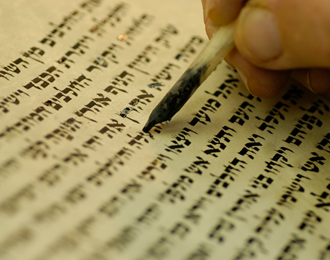The book of Jasher
15-07-2025 - Posted by Geert-JanOriginally posted on February 10, 2021 - by Andre Piet
Twice in the Hebrew Bible, there is mention of (as the common translations call it) “the Book of the Upright.” The first time in connection with the sun standing still in the battle against the Amorites:
And the sun stood still and the moon stayed, until the nation avenged themselves on their enemies. Is this not written in the Book of the Upright? The sun stood still in the midst of the heaven and did not hasten to go down for about a whole day.
-Joshua 10:13- (CLNT)
The second time this book is referred to is in the story of David mourning the loss of his friend Jonathan:
17 And David lamented with this lamentation over Saul and over Jonathan his son, 18 and he commanded them to teach the sons of Judah the song of the bow; behold, it is written in the Book of the Upright. 19 The beauty, O Israel, is slain upon your high places! How are the mighty fallen!
-2 Samuel 1:18- (CLNT)
Beyond what is mentioned in these two texts, we actually know nothing about this book. In Hebrew, it is called “sefer haJasher,” which literally translates to ‘book of the upright’ (singular). Other Bible translations (such as the King James) leave Jasher untranslated, and thus it is called “book of Jasher.”
lost document?
Usually, the book of Jasher is thought of as a lost document. And why not? In 1 Kings 4:32, we read that Solomon wrote more than a thousand songs, while we know only a few (Psalm 72, Psalm 127, and the Song of Songs). Scripture often refers to documents, persons, place names, or customs that we can no longer or hardly trace today. Since Scripture is its own interpreter, such ‘missing links’ are apparently not of essential importance.
forgeries
Some claim that the book of Jasher is still among us. There are even two books that claim to be the book of Jasher. But in my opinion, both cases are pseudepigraphical writings or forgeries. The first (and most well-known) is a Jewish midrash that dates from the eleventh or twelfth century of our era. This book is a retelling of history from Abel to the death of Joshua, but mixed with all sorts of fabrications, anachronisms, and legends. Chapter 13 claims that Abram was 50 years old when he left Haran, while Gen.12:4 says that Abram was 75 years old then. In chapter 80, it is said that God sent 15 plagues to Egypt, while Scripture speaks of 10 plagues. Chapter 81 says that the Red Sea was split into twelve parts, while Ex.14:22 speaks of two parts. In chapter 42, it is told that Joseph visited his mother Rachel’s grave and called upon her to speak to him, and she actually answered him. It should be clear: such data are unmistakably unbiblical.
The second book dates from the eighteenth century and was published by Jakob Ilive. The subtitle of his publication reads:
Translated into English by Flaccus Albinus Alcuinus, of Great Britain, abbot of Canterbury, who went on a pilgrimage to the Holy Land and Persia, where he discovered this book in the city of Gazna.
The book mainly attempts to discredit Moses and is nowadays hardly taken seriously by anyone.
still in the Bible?
Very interesting is, in my opinion, what the Companion Bible suggests, namely that haJasher or the Upright refers to Israel because the name Israel is derived from the same root as Jasher (Gen.32:28). It is also a variant of the name Jeshurun, which also refers to Israel, as we read in Deut.32:15. In that case, “the book of Jasher” would be the book of Israel, and then it is obvious that it refers to the Pentateuch or “the Torah.” These are indeed multiple books, but as a bundled unit, it is also called the “book of the law” (Josh.8:31). This is also how it is understood in the Targum, an Aramaic Bible translation, where “the book of Jasher” is rendered as “the book of the law.”
In Joshua 10:13, it is told that Israel had avenged itself on its enemy, as “written in the book of Jasher.” This statement could indeed refer to the Torah, in which there is often mention of the struggle that Israel would have to fight. And also in 2 Samuel 1:18, that struggle (“the bow”) may be referred to.
In summary: the book of Jasher is either a reference to a lost document or it refers to “the book of the law,” the first part of our Bible.

 English Blog
English Blog